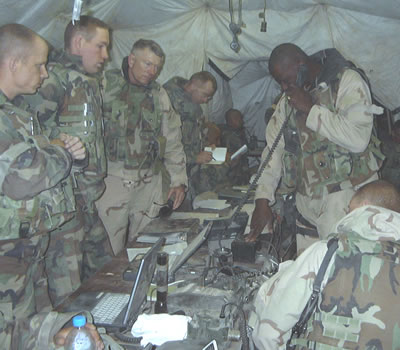Start < Page 1 of 7 >
The military establishment is currently transforming itself to fully benefit from advanced information networking technology. In the past two decades, fundamental changes were introduced to the military infrastructure; new information systems were implemented, improving availability and management of information.
But the flow of information normally fail severely, as soon as forces start moving – technical restrictions limited the integration of mobile systems to information “islands”. Without effective command and control systems, combat units had to be operated “the old way”, relying on slow and unreliable voice communication, vulnerable relay stations, hand drawn maps and visual signals. These “islands” were most common at the “last mile” between battalion and brigade and brigade to division levels.
However, combat experience indicates that valuable information is generated at battalion level – battlefield intelligence, friendly forces status and locations, etc. A dangerous “fog of war” results when real-time data is not fed quickly enough through the command system, to update the “situational picture” at the higher echelons. These conditions are most susceptible to fratricide. Fortunately, modern, multimedia communications systems are now filing this gap with advanced, automated command and control capabilities which transform the military forces into more effective, cohesive, efficient, and synchronized network-centric system of systems.
Additional parts of this article:
- Military Command and Control (C2) and Mobile Networking
- Mobile Cellular Networks in Military Use
- Military Wireless Data Networks
- Tactical Mobile Broadband Networks
- Tactical Satellite Communications Networks
- Command and Control (C2) Systems for the Tactical Echelon
- Dismounted & Mobile Command and Control (C2) Systems






















